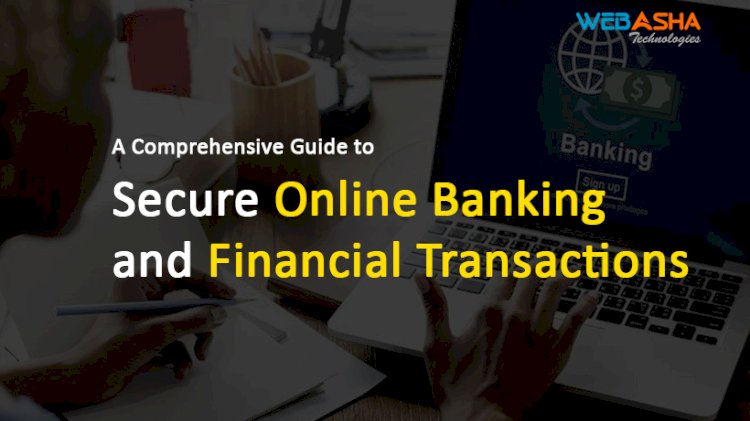A Comprehensive Guide to Secure Online Banking and Financial Transactions
Discover a comprehensive guide to secure online banking and financial transactions. Learn how to protect your financial data, avoid phishing scams, use secure networks, and implement strong authentication. Navigate the digital financial landscape with confidence.

In an age where convenience meets technology, online banking has become an integral part of our financial lives. However, with this convenience comes the imperative to ensure the security of our financial transactions. This comprehensive guide dives deep into the world of online banking, equipping you with essential knowledge and practical strategies to conduct financial transactions securely in the digital realm.
Introduction: The Evolution of Banking in the Digital Age
The banking landscape has undergone a profound transformation with the advent of online banking. From managing accounts and transferring funds to paying bills and applying for loans, all can be done with a few clicks. However, this convenience is accompanied by cybersecurity risks that must be addressed to safeguard our financial well-being.
Understanding the Risks: Cyber Threats in Online Banking
The digital realm is fraught with various cyber threats that can compromise our financial data and transactions. Phishing attacks, malware infections, and man-in-the-middle attacks are just a few examples of how cybercriminals exploit vulnerabilities to gain unauthorized access to sensitive information.
1. Securing Your Devices and Networks
The first line of defense in online banking is securing your devices and networks. Ensure your devices are protected with strong, unique passwords or biometric authentication. Keep your operating system, antivirus software, and applications up to date to defend against known vulnerabilities.
2. Two-Factor Authentication (2FA): Adding an Extra Layer of Security
Implement two-factor authentication wherever possible. 2FA requires you to provide a second piece of information beyond your password, such as a unique code sent to your mobile device, enhancing the security of your accounts.
3. Using Secure and Trusted Networks
Avoid conducting financial transactions over public Wi-Fi networks, as they are more susceptible to cyberattacks. Stick to secure, password-protected networks or consider using a Virtual Private Network (VPN) to encrypt your internet connection.
4. Beware of Phishing Scams
Phishing scams are a common tactic used by cybercriminals to trick users into revealing their sensitive information. Be cautious of unsolicited emails, messages, or links asking for personal or financial details. Always verify the authenticity of the sender before clicking on any links.
5. Keeping Financial Apps Updated
If you use mobile apps for online banking, ensure they come from trusted sources like official app stores. Regularly update these apps to access the latest security patches and features.
6. Regularly Review Account Statements
Consistently monitor your bank and credit card statements for any unauthorized or suspicious transactions. Early detection can help mitigate potential losses resulting from fraudulent activity.
7. Secure Password Practices
Use strong and unique passwords for your online banking accounts. Avoid using easily guessable information such as birthdays or names. Consider using a password manager to generate and store complex passwords securely.
8. Secure Online Shopping
When making online purchases, ensure the website is encrypted. Look for "https://" in the website's URL and a padlock icon in the address bar. Avoid saving payment information on websites unless absolutely necessary.
9. Avoid Public Computers
Refrain from using public computers for online banking and financial transactions. These computers may not be adequately secured, making your sensitive information vulnerable to unauthorized access.
10. Regularly Monitor Your Credit
Regularly check your credit reports for any unusual or unauthorized activity. This can help you catch any potential identity theft or fraudulent accounts.
Conclusion: Navigating the Digital Financial Landscape
As online banking continues to shape our financial interactions, ensuring security is paramount. By adopting these comprehensive strategies, you can mitigate the risks associated with online financial transactions. Remember, the key lies in vigilance, education, and proactive measures.
Embrace a proactive mindset, educate yourself about the evolving cyber threats, and implement strong security practices. With a well-informed approach, you can navigate the digital financial landscape with confidence, ensuring the safety of your transactions and protecting your hard-earned assets. By staying informed and vigilant, you can make the most of the convenience of online banking while safeguarding your financial well-being.














![Top 10 Ethical Hackers in the World [2025]](https://www.webasha.com/blog/uploads/images/202408/image_100x75_66c2f983c207b.webp)








